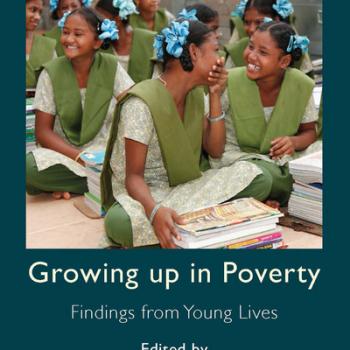Publication Information

The first part of this volume highlights four important trends that have affected children in the study countries since Young Lives began ? trends that also apply to many other countries in the developing world. First, amid the economic growth of all countries in the study, there have been striking changes at the community level, as well as striking differences between communities, that have significant outcomes for the children. Second, factors in home background remain key to acquiring competencies and skills, affecting even what children learn at school. Third, poverty has many overlapping dimensions, with cumulative effects on children. Fourth, the data provide an insight into the decisions of poor children and their families, sometimes made amid severe constraints, about their life trajectories and how to spend their time. The second part of this volume focuses on schooling, which has grown in dominance in the children?s lives, reflecting a wider trend in the developing world. The ascendency of school is one key theme. Another is the pressure felt by some children to work alongside school to improve their life chances. A third theme is the persistent inequality in outcomes from schooling. While the numbers of Young Lives children in school have grown, some children are still severely disadvantaged in the school system. Outcomes in terms of the skills that children acquire at school reflect unequal opportunities for the children.
The final published version of the article is available on the publisher's website.
Reference:
Bourdillon, Michael and Jo Boyden (2014) ' Introduction: Child Poverty and the Centrality of Schooling', in Michael Bourdillon and Jo Boyden Growing up in Poverty: Findings from Young Lives (pp. 1-20). Oxford: Palgrave Macmillan.

The first part of this volume highlights four important trends that have affected children in the study countries since Young Lives began ? trends that also apply to many other countries in the developing world. First, amid the economic growth of all countries in the study, there have been striking changes at the community level, as well as striking differences between communities, that have significant outcomes for the children. Second, factors in home background remain key to acquiring competencies and skills, affecting even what children learn at school. Third, poverty has many overlapping dimensions, with cumulative effects on children. Fourth, the data provide an insight into the decisions of poor children and their families, sometimes made amid severe constraints, about their life trajectories and how to spend their time. The second part of this volume focuses on schooling, which has grown in dominance in the children?s lives, reflecting a wider trend in the developing world. The ascendency of school is one key theme. Another is the pressure felt by some children to work alongside school to improve their life chances. A third theme is the persistent inequality in outcomes from schooling. While the numbers of Young Lives children in school have grown, some children are still severely disadvantaged in the school system. Outcomes in terms of the skills that children acquire at school reflect unequal opportunities for the children.
The final published version of the article is available on the publisher's website.
Reference:
Bourdillon, Michael and Jo Boyden (2014) ' Introduction: Child Poverty and the Centrality of Schooling', in Michael Bourdillon and Jo Boyden Growing up in Poverty: Findings from Young Lives (pp. 1-20). Oxford: Palgrave Macmillan.

